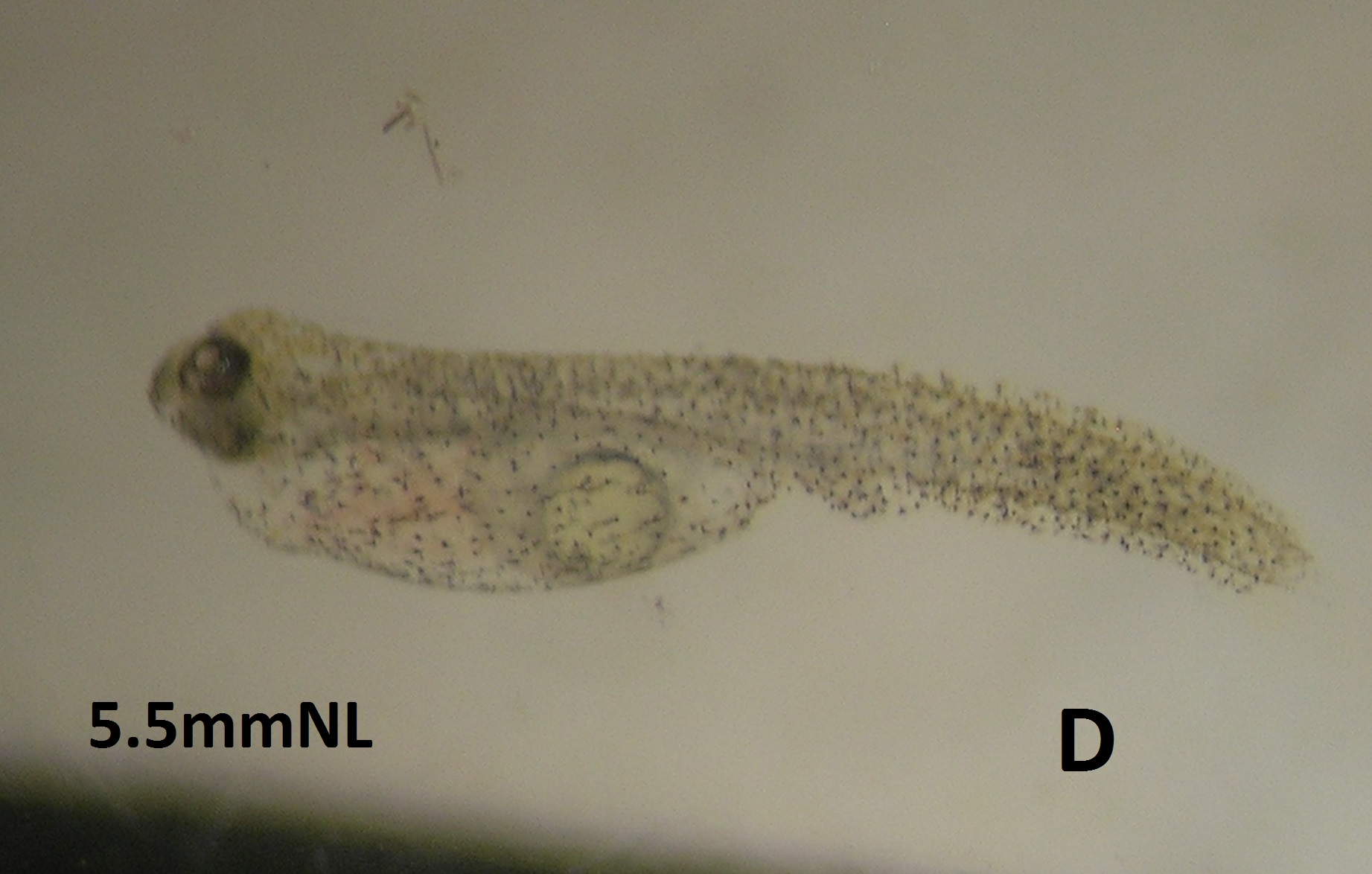Carangidae: E I A1
Lichia amia (Linnaeus 1758)
Garrick









Egg diameter in µm |
Number of oil globules |
Diameter of oil globule in µm |
Yolk texture |
Perivitelline space |
Position of oil globule at hatch |
Gut length at eye- pigment stage |
Myomeres |
1800-1920 |
1 |
550-600 |
Segmented |
narrow |
bow |
55% of NL |
24 |
Egg: This is perhaps the largest carangid egg known, and has a huge brown/amber oil globule. As the egg develops, the yolk becomes splattered with black pigment, and the larva even more so (C). Insufficient of these eggs have been found, to indicate incubation period, but an estimate, based on size, would be 4 days. .
Larva: Perhaps because of its large size, the oil globule never really moves tightly into the bow as is the characteristic of most newly hatched carangid larvae (C & D, but note that in D it is mis-placed towards the rear of the yolk sac, which I believe to be abnormal). Gut length had increased to about 59% at early flexion (H). At this stage the larva had a large air bladder, a peaked supraocular ridge (H1, arrow above eye) and had developed preopercular spines, the largest of which, in length, was about half eye diameter (H1, arrow). C: NH, D: 1 day, E: 3 days, F: 4 days, G: 6 days, H: 15 days (22-23°C).
One larva, from a sea-collected egg, was successfully taken through the tricky "first-feeding" stage, but not past flexion (H above). The identification was initially based on some eggs this size, taken in the Two Oceans Aquarium in Cape Town, during observed spawning behaviour in the main tank (P. Garratt, pers. comm., after one false start, when the eggs turned out to be geelbek, Atractoscion aequidens LIIA6). Barcodes of 5 larvae hatched from plankton eggs collected off Park Rynie, have matched 3 locally collected adult Lichia amia (BOLD).
A similar egg, but slightly larger (2.085mm), collected 17 September 2007, has provided a barcode match with the wreckfish, Polyprion americanus (EIA1A, BOLD). This is consistent with details of wreckfish eggs reported by Richards (2006, p. 1218), although he gives a smaller diameter of 1.65mm.

Lichia enters KZN waters from the south, in early winter, on an annual migration to spawning grounds that appear to be in the Mvoti to Tugela area of the Natal Bight (personal observation). The egg was rare in the Park Rynie area, and was only found in offshore samples, from September to November (blue graph).
Despite this dominance of eggs in the offshore samples, I can find no reference, or witness, to adults being seen on the Aliwal Shoal, 4km offshore at Scottburgh, 5km north of Park Rynie. Yet they are common, in early winter, just outside the surfzone, along the shores of the Aliwal MPA, as they move north towards their spawning grounds. This suggests that the species does not spawn in the Park Rynie area, and their eggs are being transported into the area over the 72 hours or more that they take to hatch, presumably from further north, by combinations of wind and current associated with the Durban Bight eddy (see Section 3.4.2 of the Introductory Notes, for more information). Such transport of the eggs is necessary, as the adults are not known to move far offshore, generally remaining within 500m of the coast.
Linked samples |
Offshore |
Inshore |
Eggs |
12 |
0 |
Hits |
10 |
0 |